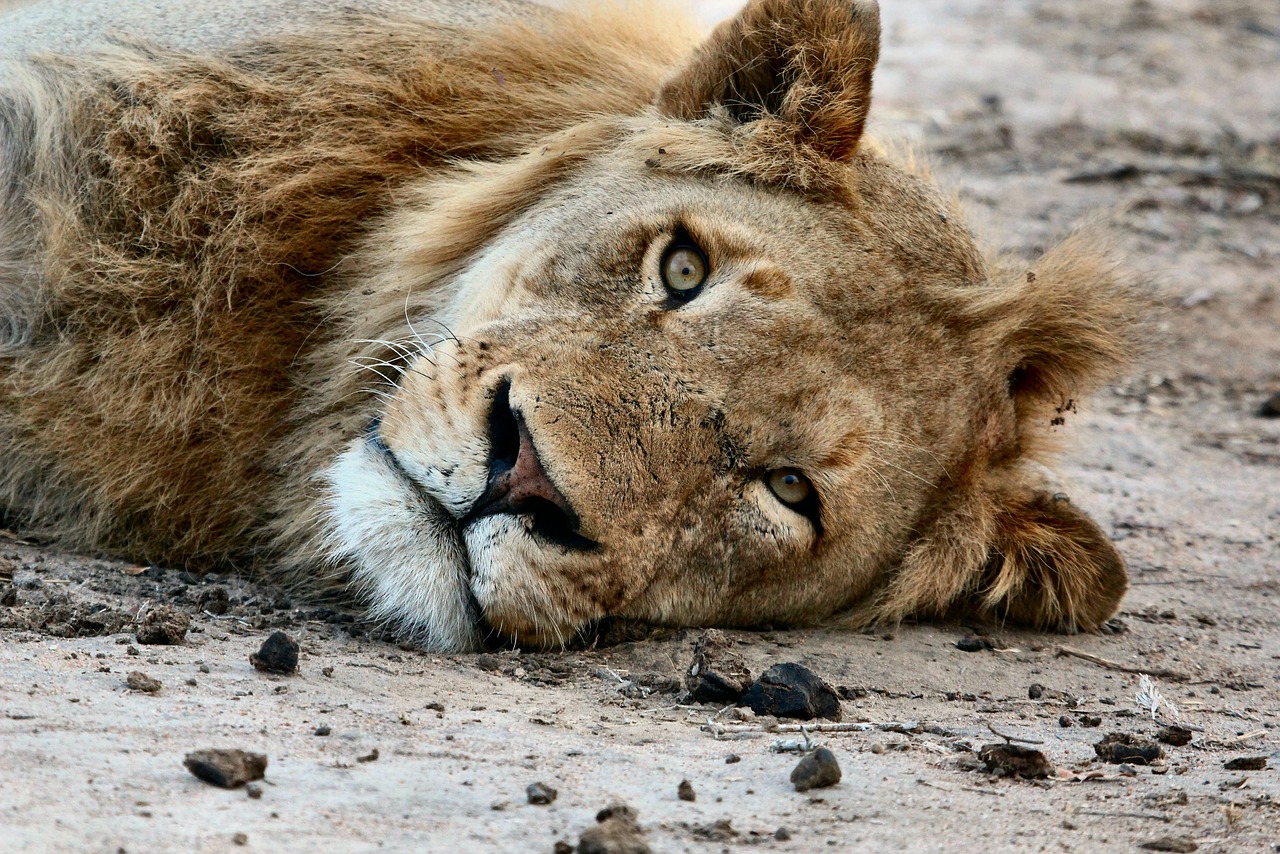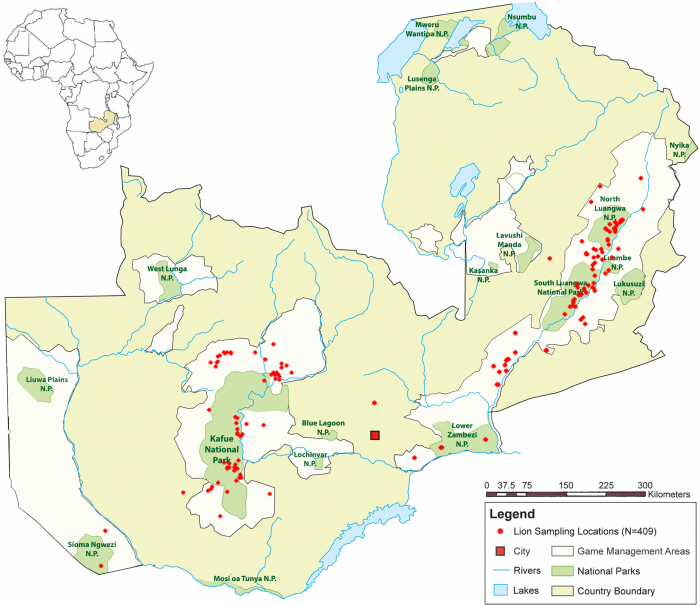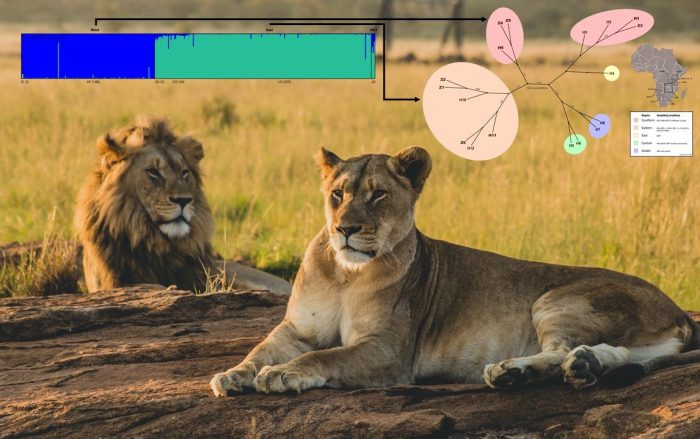
In a study recently published in PLoS One, we have found that small numbers of lions in Zambia are moving across landscapes previously thought to be uninhabitable by lions, accounting for sustained high levels of diversity in the population. This study was led by myself and Dr. James Derr at the Texas A&M College of Veterinary Medicine & Biomedical Sciences in collaboration with Dr. Paula White of the Zambia Lion Project.
Zambia has one of the largest lion populations in Africa. With over 200,000 sq. km of protected land, the population is approximately 1,200 strong. The Greater Kafue Ecosystem in the west and the Luangwa Valley Ecosystem in the east are geographically different regions, anthropogenically separated by increased human activity between them. Mitochondrial studies have previously shown there are two highly diverse sub-populations of lions split between the Greater Kafue and Luangwa Valley ecosystems. These sub-populations live in different habitats and are separated by Zambia’s largest city, Lusaka, surrounded by farmland. This area lacks the same protection as that of national parks and game management areas. It was, therefore, suspected to be unsuitable lion habitat, completely isolating the sub-populations from each other.

Figure republished from PLOS One
Through the analysis of both nuclear and mitochondrial genes of 409 lions, we verified that, genetically, there are two sub-populations of lions in Zambia, an eastern and a western sub-population. Mitochondrial analysis again showed a lack of gene flow between the sub-populations; however, by also analyzing the nuclear genes, we found evidence that small numbers of lions are moving across the “unsuitable” habitat.
Males are likely responsible for this movement. In the lion mating system, males travel long distances away from their natal pride, while females remain in or close to their natal pride. Male-mediated gene flow also explains the lack of gene flow seen in mitochondrial genes compared to that of nuclear genes. Male-mediated gene flow has helped keep the lions of Zambia genetically healthy, increasing genetic diversity by introducing new genes to new areas as lions move between sub-populations. A benefit of having higher genetic diversity is a greater chance for adaptation to a changing environment. Both the eastern and western sub-populations have high levels of genetic diversity, but they are still genetically distinct enough to remain two sub-populations.

Figure courtesy Caitlin Curry
We were also able to determine where the lions are moving based on which lions are more genetically similar to each other. From this information, we can see that lions in the North and South Luangwa National Parks, part of the eastern sub-population, appear completely separated from the western sub-population. Gene flow occurs through the southern regions of the eastern sub-population. Lions are moving between the Lower Zambezi National Park and eastern corridor to the Kafue National Park.
These findings will be used to help with lion conservation and wildlife management in and around Zambia. Lions are a flagship species, meaning that as a large, charismatic carnivore, their research and conservation influences many other species that share their habitat. Knowing where lions are moving will help in making decisions on where and how to manage lions and other wildlife populations.









